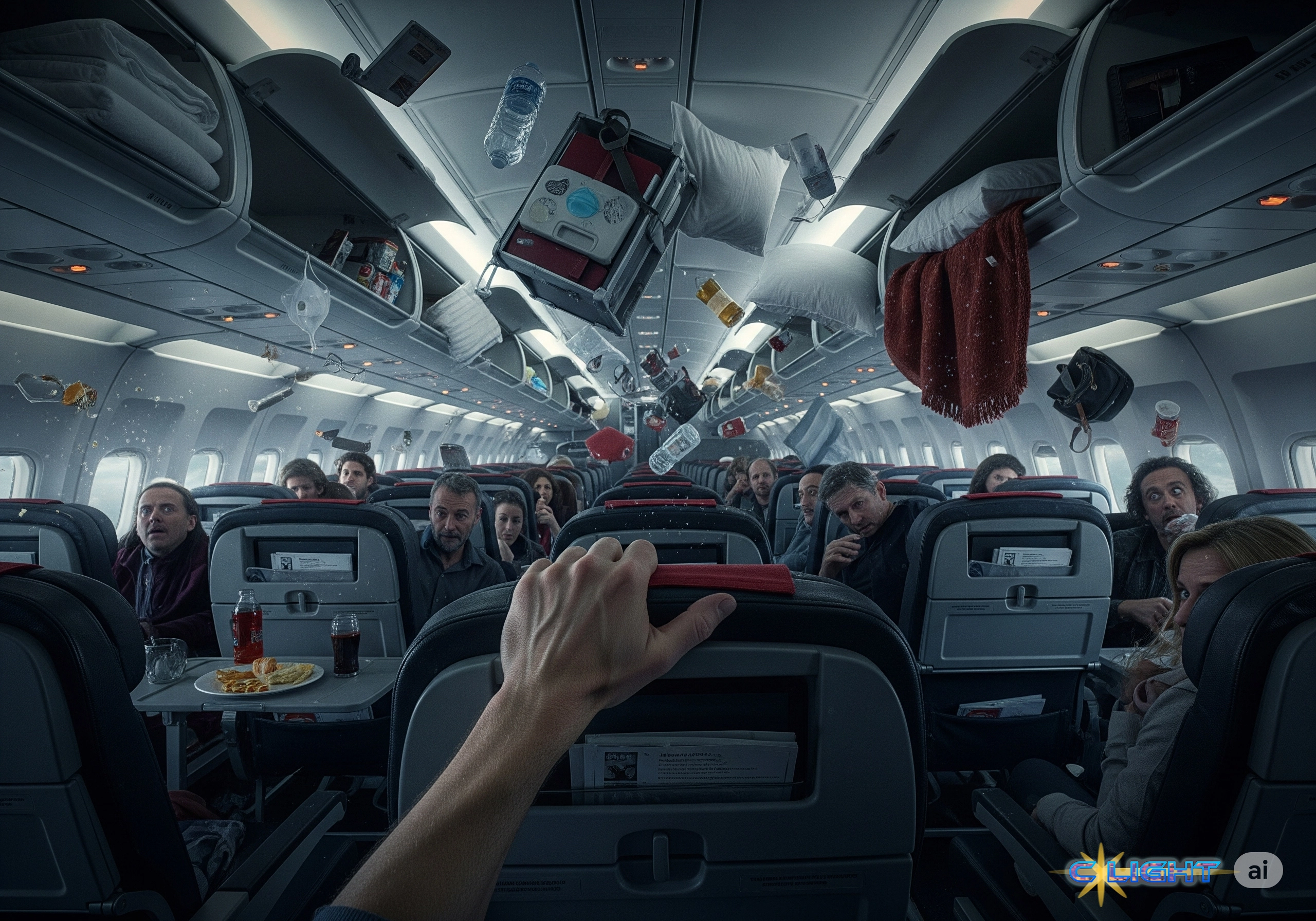The scene aboard Delta Air Lines Flight 56, en route from Salt Lake City to Amsterdam, was one of sudden, terrifying chaos. According to passenger Leann Clement-Nash, who spoke to ABC News, some of the 275 passengers and 13 crew members who weren’t wearing seat belts were violently “thrown about the cabin.” “They hit the ceiling, and then they fell to the ground,” she recounted, her words painting a visceral picture of the mid-air emergency that forced an emergency landing in Minneapolis, sending 25 people to local hospitals. This dramatic incident serves as a stark reminder of a persistent danger in air travel, one that scientists warn is likely to worsen as the planet warms—a reality the current administration in Washington willfully ignores at the peril of American lives.
Part I: The Most Common Danger
While catastrophic airline accidents dominate headlines and fuel our deepest fears about flying, the reality, according to a 2021 National Transportation Safety Board (NTSB) report, is that turbulence-related incidents are the most common type of accident for U.S. air carriers. This jarring statistic reframes events like the Delta flight not as isolated anomalies, but as severe manifestations of a continuous and often underestimated threat lurking within the seemingly smooth skies. Turbulence, that irregular motion of air resulting from chaotic eddies and vertical currents, can range from a mild jiggle to severe jolts that can momentarily throw an aircraft out of control and violently impact those inside.
Part II: A Disturbing Trend?
The Delta flight is far from an isolated event this year, suggesting a potentially troubling trend. The AP news service has compiled a partial list of other significant turbulence incidents in recent months: a midair collision over Washington, D.C., in January; a plane flipping over in Toronto in March; a Ryanair flight forced to make an emergency landing in Germany after violent turbulence injured nine people; a United Airlines flight encountering severe turbulence over the Philippines, injuring five; and a fatal incident in May 2024 on a Singapore Airlines flight, marking a rare death from turbulence on a major airline. While each incident has its own specifics, the sheer number of these events raises questions about whether the skies are becoming less stable.
Part III: The Climate Connection and the Chaos in Washington
This rash of recent, severe turbulence incidents is not just a statistical anomaly; it is a potential symptom of a much larger and more predictable crisis. Scientists have been warning for years that climate change, driven by the burning of fossil fuels, is altering the jet stream—the high-altitude rivers of air that planes rely on. These changes are making the atmosphere more volatile, increasing the frequency and intensity of “clear-air turbulence,” the most dangerous and unpredictable form of the phenomenon. In short, the very physics of our atmosphere are becoming more violent, and the future of air travel is likely to be a bumpier and more dangerous one.
This is a threat that any responsible government would be taking with the utmost seriousness, investing in better forecasting models, and working to address the root cause of the problem. The Felonious Punk administration, however, is not just ignoring this threat; it is actively working to dismantle the very tools we have to understand and combat it. As we have documented this week, the administration is waging a two-pronged war on the Environmental Protection Agency, simultaneously attempting to revoke the legal finding that allows the government to regulate greenhouse gases while also shuttering the agency’s core scientific research arm.

This is the chaos in Washington that has a direct and terrifying connection to the chaos in the skies. The administration is systematically blinding the government to the realities of climate change at the exact moment those realities are beginning to manifest in ways that directly endanger American lives. Their petty, ideological war on climate science is not an abstract political game; it has real-world consequences. When a passenger is thrown from their seat at 35,000 feet, it is a visceral reminder that the administration’s decision to ignore science is not just a policy choice—it is a reckless gamble with public safety.
The Simple, Critical Safeguard
In an era of increasingly volatile skies, potentially fueled by a changing climate that the nation’s leadership refuses to acknowledge, there is one simple, critical action every airline passenger can take to protect themselves: keep your seatbelt fastened whenever you are seated. The National Weather Service’s stark description of severe turbulence – “Occupants of the airplane will be forced violently against their seat belts” – underscores the life-saving potential of this basic safety measure. As the incident on Delta Flight 56 tragically illustrates, those who are not buckled in are at the greatest risk when the invisible forces of turbulence strike. In a world where both the atmosphere and our government’s response to its changes are becoming increasingly turbulent, personal responsibility and simple precautions may be the most effective tools we have to ensure our safety in the skies.
Discover more from Clight Morning Analysis
Subscribe to get the latest posts sent to your email.










